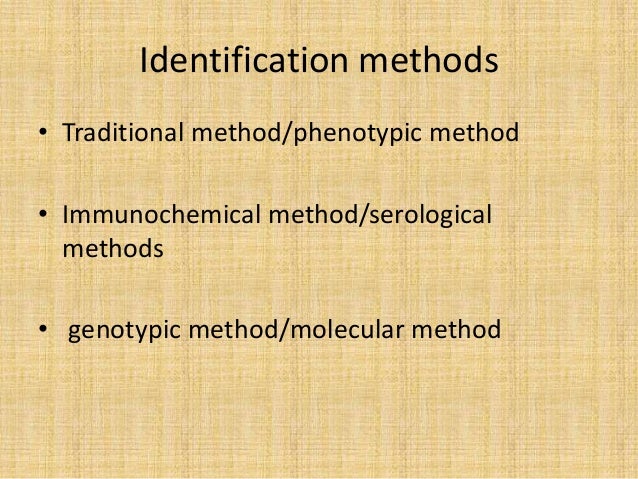The traditional identification methods are visual inspection of pathogen in situ or in vitro in pure culture by microscopic examination stain reaction colony characters oxygen requirement physiological characters biochemical characters and serological methods. DNA-DNA hybridization initially developed in the 1980s is used to determine the similarity of DNA sequences from different organisms.
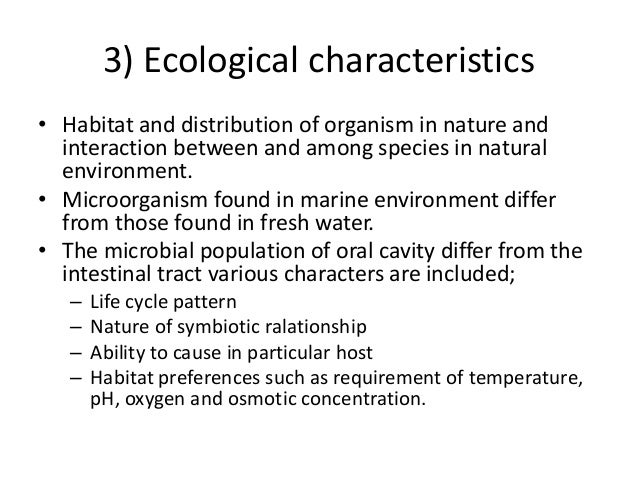
Nomenclature Classification And Identification Of Bacteria By Anil S
In PCR DNA is extracted from the organism or sample suspected of containing the organism then primers are added.

Ecological identification methods of bacteria. Most identification methods are not intended for use with environmental isolates. Key Points Chemical assays used for bacterial identification utilize various components of the microorganisms including structural. DNA sequencing is the gold standard for microorganism identification.
New methods for the identification of bacteria based on the principles of molecular biology have also been developed and specially polymerase chain reactions PCR based methods. 1977 and can generate high-quality long 7501000 base pair bp sequences. As the 16S rRNA gene is.
The 16S ribosomal RNA rRNA gene is the most common sequencing target for bacteria and is 1542 base pairs bp in length. The characters that are used to study classily and identify bacteria can be broadly divided into two categories - 1 classical traditional method 2 genomic molecular method. Microbiology lecture 8 bacterial identification methods in the microbiology laboratory - This microbiology lecture is going to explain the bacterial identi.
DNA -based approaches used in the identification and classification of species of bacteria include DNA-DNA hybridization DNA fingerprinting and DNA sequencing. 13 Preliminary tests used to identify gram-positive aerobes include the presence or absence of hemolysis on a blood agar plate Figure 3-7 a positive or negative catalase test and the production of coagulase. A method of differentiating bacterial species into two large groups Gram-positive and Gram-negative.
Culture enrichments and culture-independent molecular methods were employed to identify and confirm the presence of novel ammonia-oxidizing bacteria AOB in nitrifying freshwater aquaria. Microbiology laboratories use published methods to identify bacteria. Genotypic characteristics These methods are increasingly being used to identify microorganisms.
They are being used for routine identification for many years. Radioisotopic methods include the use of radioisotopes to help identify specific metabolic pathways utilized by bacteria. This technique has the advantage of being able to identify difficult-to-cultivatestrains and is growth and operator independent.
Nucleic acid hybridization Probes can be. Molecular methods such as polymerase chain reaction PCR and more advanced methods discussed next can be useful to identify bacteria that are difficult or slow to grow in culture such as Mycobacterium. Sequencing through the Sanger method has been used to identify nucleotide sequences for several decades Sanger et al.
Micro-electrodes are commonly being used. Traditional or classical methods involve study different characters of organisms. An organism that is too small to be seen by the unaided eye especially a single-celled organism such as a bacterium.
Reactors were seeded with biomass from freshwater nitrifying systems and enriched for AOB under various conditions of ammonia concentration. A comparison of identification systems would provide better options for identifying environmental bacteria for ecological studies. Significance and Impact of the Study.
DNA-based technology for the identification of bacteria typically uses only the 16S rRNA gene as the basis for identification. However Sanger sequencing can-not be performed on mixed assemblages of DNA without first separating each unique DNA fragment. These molecular markers provide a tool for proper identification of these oft-mistaken speciesIMPORTANCE 16S rRNA gene sequencing in bacteria has long been held as the gold standard for typing bacteria and for the most part is an excellent method of taxonomically identifying different bacterial species.
The degree of similarity is reflected in the degree to which a strand of DNA from the organism of.

Comparison Of Phenotypic And Genotypic Techniques For Identification Of Unusual Aerobic Pathogenic Gram Negative Bacilli Journal Of Clinical Microbiology

Methods Of Classifying And Identifying Microorganisms Boundless Microbiology
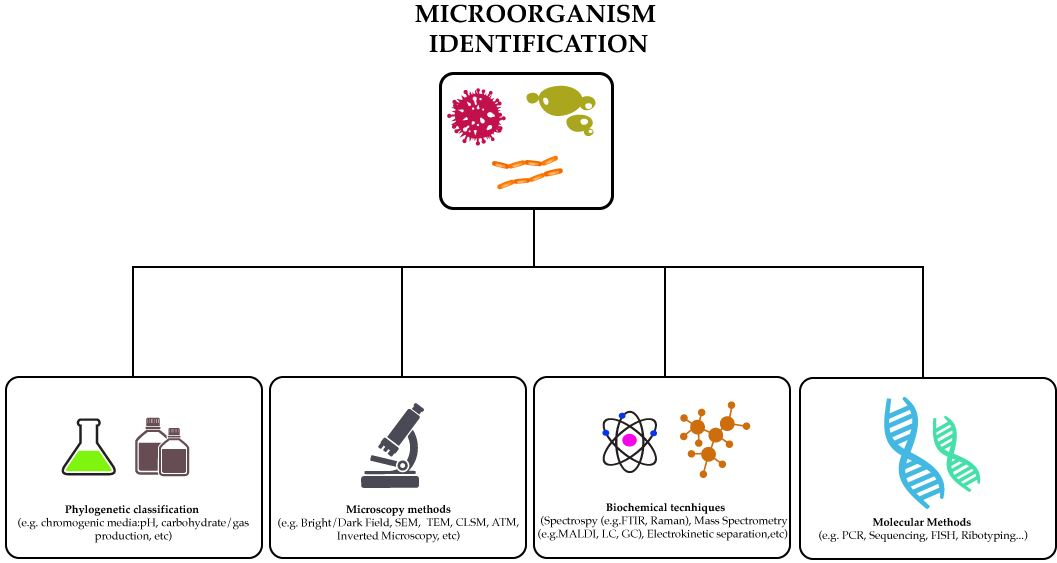
Microorganisms Free Full Text Advances In Chemical And Biological Methods To Identify Microorganisms From Past To Present Html
Methods Of Classifying And Identifying Microorganisms Boundless Microbiology

Methods Of Classifying And Identifying Microorganisms Boundless Microbiology

Microbial Identification An Overview Sciencedirect Topics

Ecology Of The Oral Microbiome Beyond Bacteria Trends In Microbiology
Chapter 18 Methods In Microbial Ecology Microbial Diversity

Microbial Detection And Identification Methods Bench Top Assays To Omics Approaches Ferone 2020 Comprehensive Reviews In Food Science And Food Safety Wiley Online Library
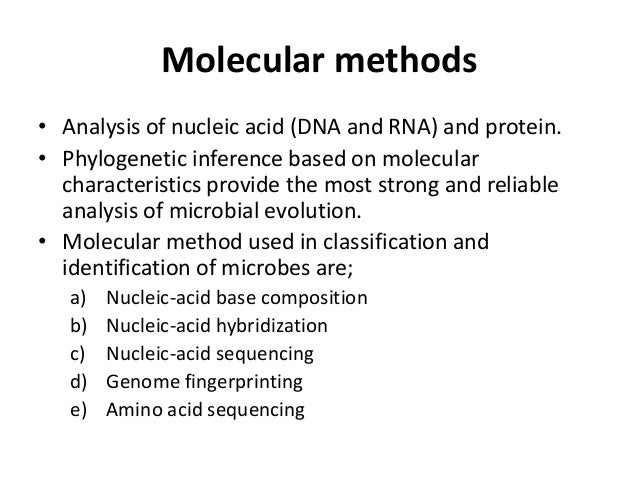
Nomenclature Classification And Identification Of Bacteria By Anil S

Methods In Microbial Ecology Ppt Video Online Download
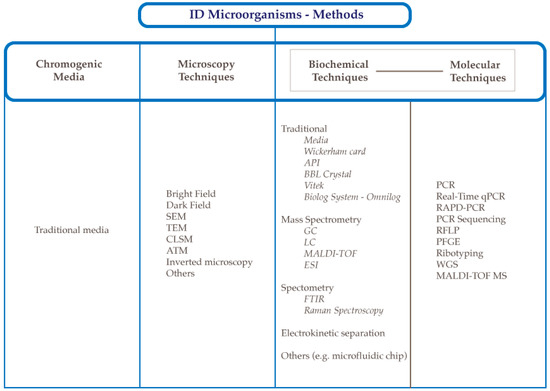
Microorganisms Free Full Text Advances In Chemical And Biological Methods To Identify Microorganisms From Past To Present Html
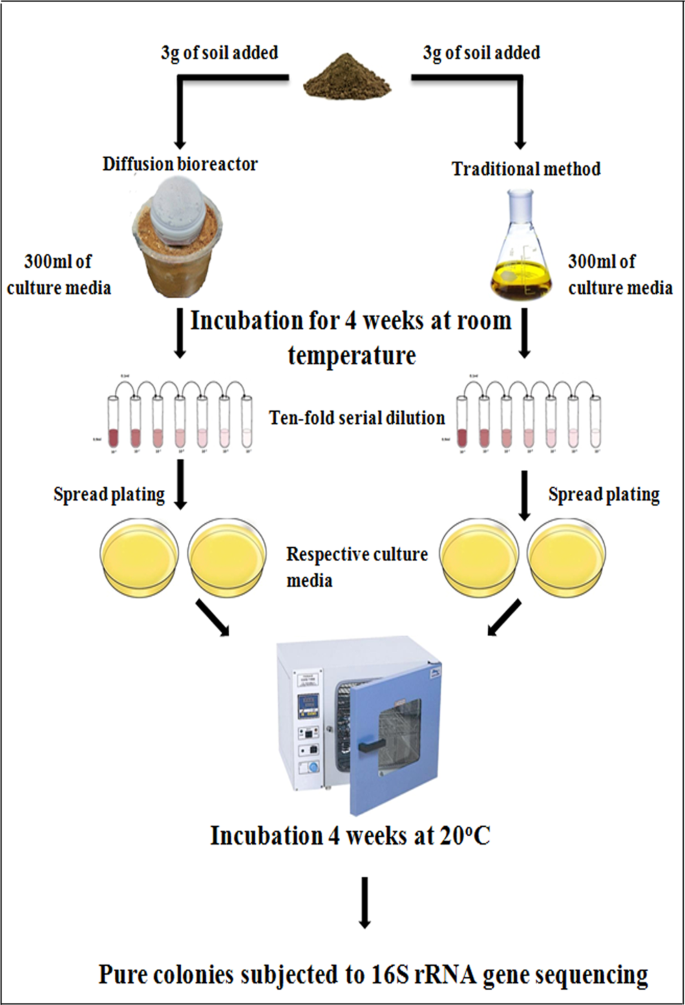
Development Of A Novel Cultivation Technique For Uncultured Soil Bacteria Scientific Reports

